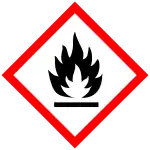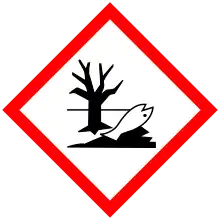Cyclooctan
Cyclooctan ist eine organisch-chemische Verbindung, die zur Stoffgruppe der Cycloalkane gehört. Die Verbindung kann in verschiedenen Konformeren auftreten.
| Strukturformel | ||||||||||||||||
|---|---|---|---|---|---|---|---|---|---|---|---|---|---|---|---|---|
 | ||||||||||||||||
| Allgemeines | ||||||||||||||||
| Name | Cyclooctan | |||||||||||||||
| Andere Namen |
Octamethylen | |||||||||||||||
| Summenformel | C8H16 | |||||||||||||||
| Kurzbeschreibung |
farblose Flüssigkeit mit muffigem Geruch[1] | |||||||||||||||
| Externe Identifikatoren/Datenbanken | ||||||||||||||||
| ||||||||||||||||
| Eigenschaften | ||||||||||||||||
| Molare Masse | 112,22 g·mol−1 | |||||||||||||||
| Aggregatzustand |
flüssig | |||||||||||||||
| Dichte |
0,84 g·cm−3 [1] | |||||||||||||||
| Schmelzpunkt | ||||||||||||||||
| Siedepunkt |
150–152 °C[1] | |||||||||||||||
| Dampfdruck | ||||||||||||||||
| Löslichkeit |
nahezu unlöslich in Wasser (7,9 mg·l−1 bei 25 °C)[1] | |||||||||||||||
| Brechungsindex |
1,4586 (20 °C)[2] | |||||||||||||||
| Sicherheitshinweise | ||||||||||||||||
| ||||||||||||||||
| Soweit möglich und gebräuchlich, werden SI-Einheiten verwendet. Wenn nicht anders vermerkt, gelten die angegebenen Daten bei Standardbedingungen. Brechungsindex: Na-D-Linie, 20 °C | ||||||||||||||||
Darstellung und Gewinnung
Die Verbindung kann durch eine Hydrierung von 1,5-Cyclooctadien, welches technisch aus 1,3-Butadien erhalten wird, hergestellt werden.[3][4]
Eigenschaften
Cyclooctan ist eine schwach riechende, farblose Flüssigkeit. Der Siedepunkt liegt bei Normaldruck bei 151,2 °C.[5] Die molare Verdampfungsenthalpie beträgt 43,35 kJ·mol−1.[6] Die Dampfdruckfunktion ergibt sich nach Antoine entsprechend log10(P) = A−(B/(T+C)) (P in bar, T in K) mit A = 3,98805, B = 1438,687 und C = −63,024 im Temperaturbereich von 369.9 K bis 467,5 K.[6] Die kritischen Größen betragen für die kritische Temperatur 374 °C, für den kritischen Druck 35,6 bar, das kritische Volumen 0,4 l·mol−1 und für die kritische Dichte 2,44 mol·l−1.[7] In fester Phase treten drei polymorphe Kristallformen auf.[6] Das Polymorph III wandelt sich bei −106,6 °C mit einer Umwandlungswärme von 6,306 kJ·mol−1 in das Polymorph II um. Bei −89,4 °C erfolgt dann die Umwandlung von Polymorph II zum Polymorph I mit einer Umwandlungswärme von 0,478 kJ·mol−1. Das Polymorph I schmilzt bei 14,8 °C mit einer Schmelzwärme von 2,410 kJ·mol−1.[6] Die Wärmekapazität beträgt bei 25 °C 215,53 J·mol−1·K−1 bzw. 1,92 J·g−1·K−1.[8]
Cyclooctan bildet leicht entzündliche Dampf-Luft-Gemische. Die Verbindung hat einen Flammpunkt von 28 °C. Die untere Explosionsgrenze liegt bei 0,95 Vol.‑%.[1] Die Zündtemperatur beträgt 250 °C.[1] Der Stoff fällt somit in die Temperaturklasse T3.
Konformationen
Cyclooctan ist repräsentativ für viele Achterringe. Seine Konformation wurde intensiv computerunterstützt untersucht. Hendrickson bemerkte, dass die „Boat-Chair“-Konformation die stabilste ist,[9] was von Allinger und seinen Mitarbeitern bestätigt wurde.[10] Die „Crown“-Konformation ist weniger stabil.
Weblinks
Einzelnachweise
- Eintrag zu Cyclooctan in der GESTIS-Stoffdatenbank des IFA, abgerufen am 8. Januar 2020. (JavaScript erforderlich)
- David R. Lide (Hrsg.): CRC Handbook of Chemistry and Physics. 90. Auflage. (Internet-Version: 2010), CRC Press/Taylor and Francis, Boca Raton, FL, Physical Constants of Organic Compounds, S. 3-130.
- Usha Rani; Muralidhar Reddy; Sarangapani; Ravinder: in J. Indian Chem. Soc. 84 (2007) 122–129.
- Muralidhar Reddy; Krista Reddy; Shobha Rani; Buchi Reddy Ravinder: in J. Indian Chem. Soc. 84 (2007) 733–738.
- Meyer, E.F.; Hotz, C.A.: Cohesive Energies in Polar Organic Liquids. 3. Cyclic Ketones in J. Chem. Eng. Data 21 (1976) 274–279, doi:10.1021/je60070a035.
- Finke, H.L.; Scott, D.W.; Gross, M.E.; Messerly, J.F.; Waddington, G.: Cycloheptane, Cyclooctane and 1,3,5-Cycloheptatriene. Low Temperature Thermal Properties, Vapor Pressure and Derived Chemical Thermodynamic Properties in J. Am. Chem. Soc. 78 (1956) 5469–5476. doi:10.1021/ja01602a003.
- Daubert, T.E.: Vapor-Liquid Critical Properties of Elements and Compounds. 5. Branched Alkanes and Cycloalkanes in J. Chem. Eng. Data 41 (1996) 365–372, doi:10.1021/je9501548.
- Wilhelm, E.; Faradjzadeh, A.; Grolier, J.-P.E.: Molar excess heat capacities and excess volumes of 1,2-dichloroethane + cyclooctane, + mesitylene, and + tetrachloromethane in J. Chem. Thermodyn. 11 (1979) 979–984, doi:10.1016/0021-9614(79)90047-8.
- Hendrickson James B.: Molecular Geometry V. Evaluation of Functions and Conformations of Medium Rings. In: J. Am. Chem. Soc. 1967, S. 7036–7043, doi:10.1021/ja01002a036.
- Dorofeeva, O.V., Mastryukov, V.S.; Allinger, N.L.; Almenningen, A.: The molecular structure and conformation of cyclooctane as determined by electron diffraction and molecular mechanics calculations. In: The Journal of Physical Chemistry. 89, Nr. 2, 1985, S. 252–257. doi:10.1021/j100248a015.
- P. W. Pakes, T. C. Rounds, H. L. Strauss: Conformations of cyclooctane and some related oxocanes. In: The Journal of Physical Chemistry. 85, Nr. 17, 1981, S. 2469–2475. doi:10.1021/j150617a013.
- G. P. Moss: Basic terminology of stereochemistry (IUPAC Recommendations 1996). In: Pure and Applied Chemistry. 68, Nr. 12, 1996, S. 2193–2222. doi:10.1351/pac199668122193.









